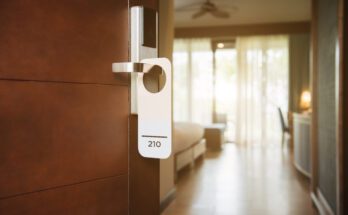An old friend is coming down in August. Down to the ground. Calgary’s Stampede Corral, former home of the Stampeders, Centennials, Wranglers, Cowboys and Flames is getting demolished as part of the expansion of BMO Centre on the Stampede Grounds. And with it, a lot of memories are stirring up in the rubble.
I grew up in Calgary and going to the Corral as a kid was always a treat because the best hockey in the city was always played there. It didn’t matter what level of hockey or who the opposition was. Going there became an event unto itself.
With just 6,492 seats, the Corral was cozy by today’s standards, but when it was built in 1950 it was the largest arena west of Toronto. For a kid, it was huge. It seemed to take forever to circle the upper standing-room rim level, which accommodated 752 patrons. There were only about 19 rows of seats and just the one level. And the dressing rooms were tiny – think your local community area kind of tiny. The boards were extremely high, by any measure. They’d go up to a player’s shoulders or neck depending upon the angle he was taken into them. So getting a first-row seat meant you were eye-to-eye with the players on the ice.
It’s hard to believe they actually played NHL hockey in the Corral. When the Flames arrived in Calgary after getting transferred from Atlanta in 1980, construction of the Saddledome meant the Corral served as home for three seasons. The next smallest NHL arena at the time was the Hartford Civic Center at 14,510.
I can still picture the first NHL game there, a 5-5 tie with Quebec. Flames goalie Dan Bouchard skated onto the ice, breaking through a banner to do so.
And before the NHL arrived, the Corral was home to the World Hockey Association Calgary Cowboys for two seasons after relocating from Vancouver in 1975. “I remember the first time Gordie Howe played in the Corral when Houston came in to play the Cowboys,” said Calgary broadcaster Mark Stephen. “I mean, Gordie Howe? In Calgary? For a real game? I had pretty much the same reaction when Bobby Hull came in, too.”
Howe was immediately taken by the Corral. In the early 2000s, Mr. Hockey was brought to Calgary for an autograph-signing event and he specifically asked for it to be held at the Corral. Before and after the signing sessions, Howe could be seen walking the concourse looking at the old photos and reading the captions.
It was a big deal when the Corral opened on Victoria Day in 1950. It cost just $1.35 million and was made of concrete and cinder blocks – pioneering elements by today’s standards. In addition to hockey, it was also used for skating competitions, dog shows, concerts and agriculture and livestock events.
The first players in the building were WHL Stampeders: Fred Hucul, Sid Finney, Lou Jankowski and Roy Edwards became stars there.
I fell in love with major junior hockey watching the Centennials play in the 1970s. Names like John Davidson, Danny Gare, Mike Rogers, Rusty Patenaude, Len Frig, Don Ashby, Jerry Holland, Garth Malarchuk, Gary Rissling, were bigger than life playing out of the Corral.
Later, the Wranglers took over the building and it was a thrill when my childhood buddy Mike Heidt made the squad then went on to star for them for three seasons. The names of Bruno Baseotto, Dan Bourbonnais, Kelly Kisio and Mike Vernon also still echo in the Corral.
Iconic Cowboys included Danny Lawson, Ron Chipperfield, Butch Deadmarsh, Smokie McLeod. The Corral was a fun place watching these guys.
The former Flame with the most NHL games played in the Corral is Jim Peplinski at 117 regular season games. He once told me “I go to the Corral a few times every year for alumni games and I find myself tempted to take down some of the old photos and bring them home with me.”
Hundreds of historic photos used to line the walls of the Corral’s concourse. Dozens of intermissions during dozens of games would be needed to peruse the images with any degree of justice. Most of them have been taken down and reproduced in recent years so the heritage archives will survive. Exterior murals that enveloped the Corral are also being saved.
The Corral became as much a hockey museum as it did a venue for playing games with each passing decade. In every visit with my dad and brother over the years, we’d stop and inspect the massive team photo of Calgary community hockey from that first season, 1950-51 (the one at the top of this page). It was easy to find the tiny figure of my father from the dozens of other kids. Because he always stood out to me – my original hero. That was the peak of his playing days and it meant the world to him that he was a part of the original class of Corral lore. Now with both the Corral and my dad into their final hours, I cherish all the priceless hours we spent there.
The concrete-relief neon cowboy which served as the Corral’s logo on the front of the building is being preserved, but the original wooden red flip seats can’t be saved or even sold off to collectors because they’re covered in lead-based paint.
Not far from the site of the Corral will be Calgary’s new arena, with construction starting next August. It’s slated to open in 2024. At that point, the Saddledome will follow in the footsteps of the Corral and be demolished.
Peplinski told me if he could snap his fingers and play one more NHL game, it would be at the Corral, though he did have one complaint. “There would be times after a practice when we wouldn’t have hot water in the showers. It would be because they were using it to clean off the bulls out back for the livestock show.”
That was the character of the Stampede Corral. So long, old friend.


